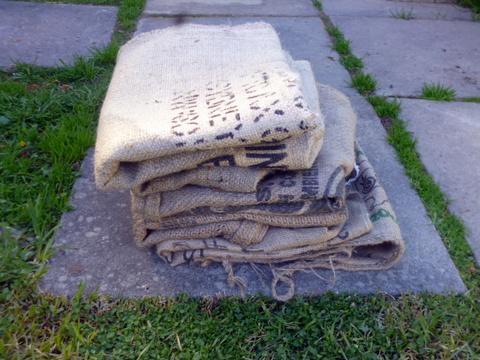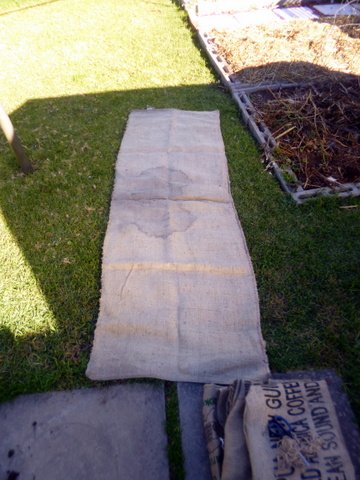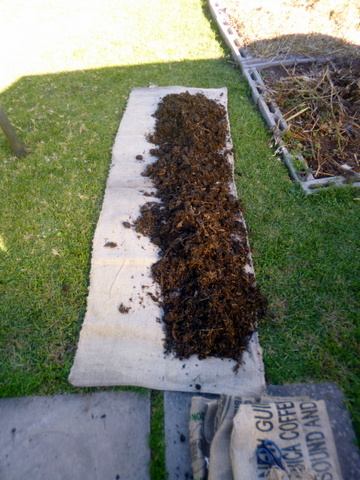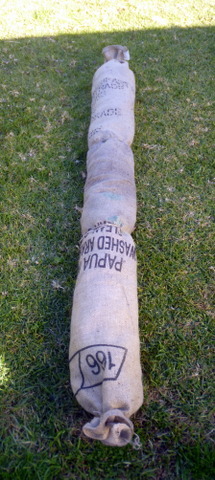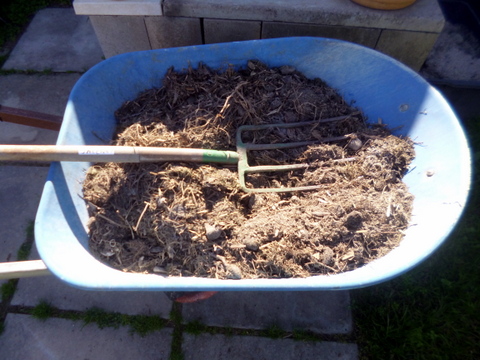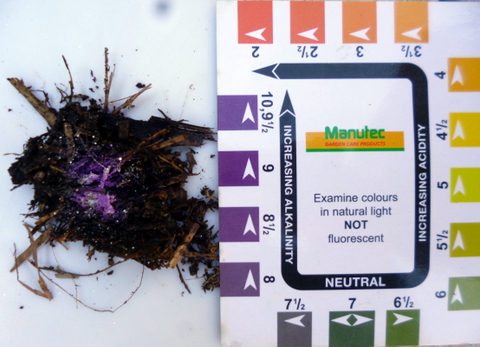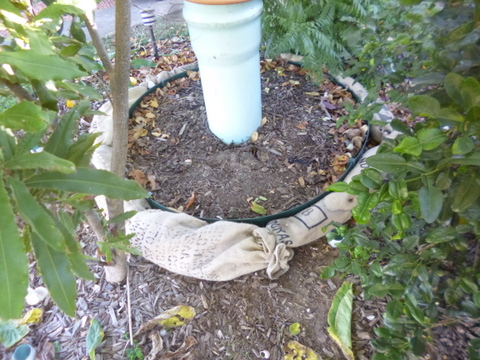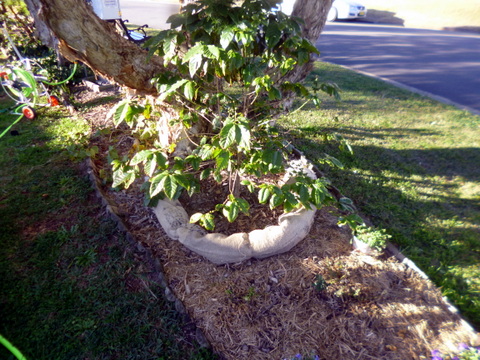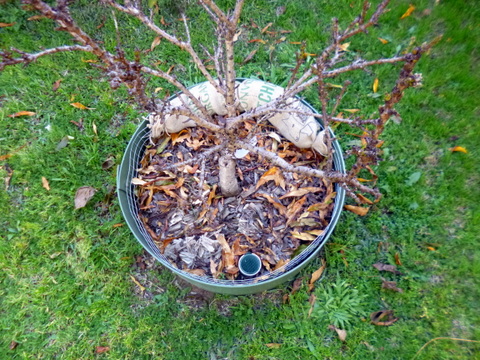Making Fertiliser Sausages
Created: 2017-07-27 03:06:49
First of all, credit where credit is due: I stole the idea from Annette McFarlane as described in her book “Organic Fruit Growing”, (check out page 43).
The idea is to find natural fibre (ie biodegradable) fabric which is no longer required, collect organic materials which will rot down to release plant nutrients then wrap the latter in the former to form long “sausages”. These sausages are draped around the drip line of fruit trees and bushes etc and act as slow release fertilisers. They are especially good for keeping stuff together and in place if your land is sloping, which mine is not, but I liked the slow release part!
This is how I put mine together
The Casing
In terms of the fabric “casing” of the sausage, a friend of mine has access to the hessian coffee bags which raw coffee beans are packed in when imported into Aus for roasting, which are then discarded. So if you want to do this the way I have check out any local coffee roasters and see what they do with their excess bags. Also if you have any local purveyors of organic produce, some of it (potatoes definitely) is shipped around the country in hessian bags.
The bags are made by being folded over and then sewn down the edges, when I get them they are already opened at the top so this is not an issue. To get the most out of each bag they need to have the sewing undone so that they can be opened out to form a piece of fabric 2 metres long. Most of the bags seem to be sewn with a hemming stitch, and you can either cut along it or unpick it from the edges. Either way takes a similar time but if you unpick it you get the twine and can use it to tie around the sausage to keep the filling in.
To fill the sausage, lay it out on the ground and heap some filling along one side, then take the edge closest to the filling, pull it up over the filling and roll it tightly so that you get the filling covered by one and a half to two turns of the material. To finish off, use biodegradable twine and tie it around both ends, with two or three intermediate ties to keep the filling from falling to one end during transport.
The Filling
The filling can be composed of whatever organic material you have available.
There is a place near us where the kids make pocket money by selling their pony poo, so I got a bag of that, probably about 25kg worth. The chook poo we produce is applied directly to the veggie patches by the chooks themselves so I had to buy in a bag, also 25kg.
To make the filling I put half the bag of pony poo and half the bag of chook poo in my wheel barrow, followed by 2 chook-food bags of our home made compost. To top it off I threw in 500lm of rooster booster (my daughter gave me a couple of bags when they moved), 2 x 500ml containers of wood ash for potassium from our fire and a handful of rockdust for trace nutrients.
The pony poo was pretty dry so I gave it all a thorough dowsing and then a thorough turning with my garden fork, to the point where the mix was moist but not dripping.
The wood ash did bring the pH up to a bit over 9 but I only took a couple of grab samples to check and it was just after mixing so I think it will settle down over time.
Installation
Once the sausage is filled and tied it is just a case of dragging it into position around the drip line of a tree or bush. I have installed a run of fertiliser sausages around the inner circle of the fruit tree circle to provide a bit of extra nutrition come spring. I have also installed them in around a couple of other fruiting plants include our coffee bush.
I have also made some smaller sausages, using the same process as above, but not opening the bag out, just using it as is to provide a double layer of casing.
